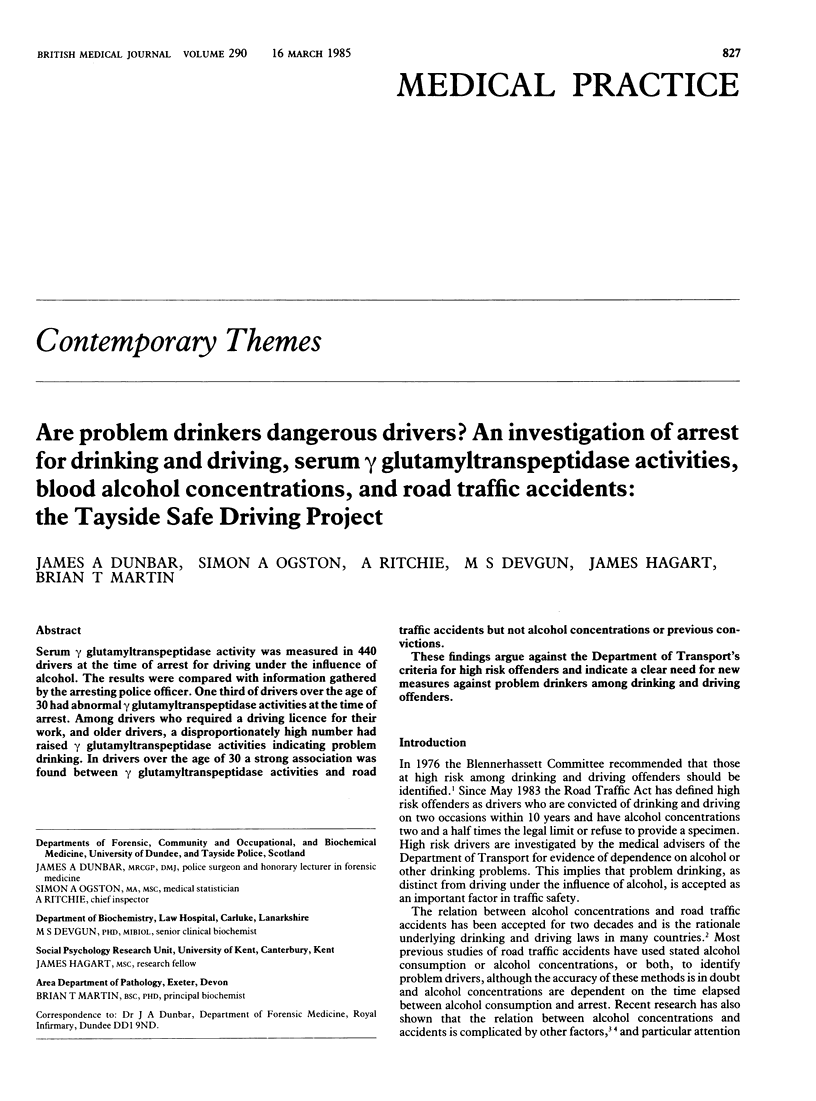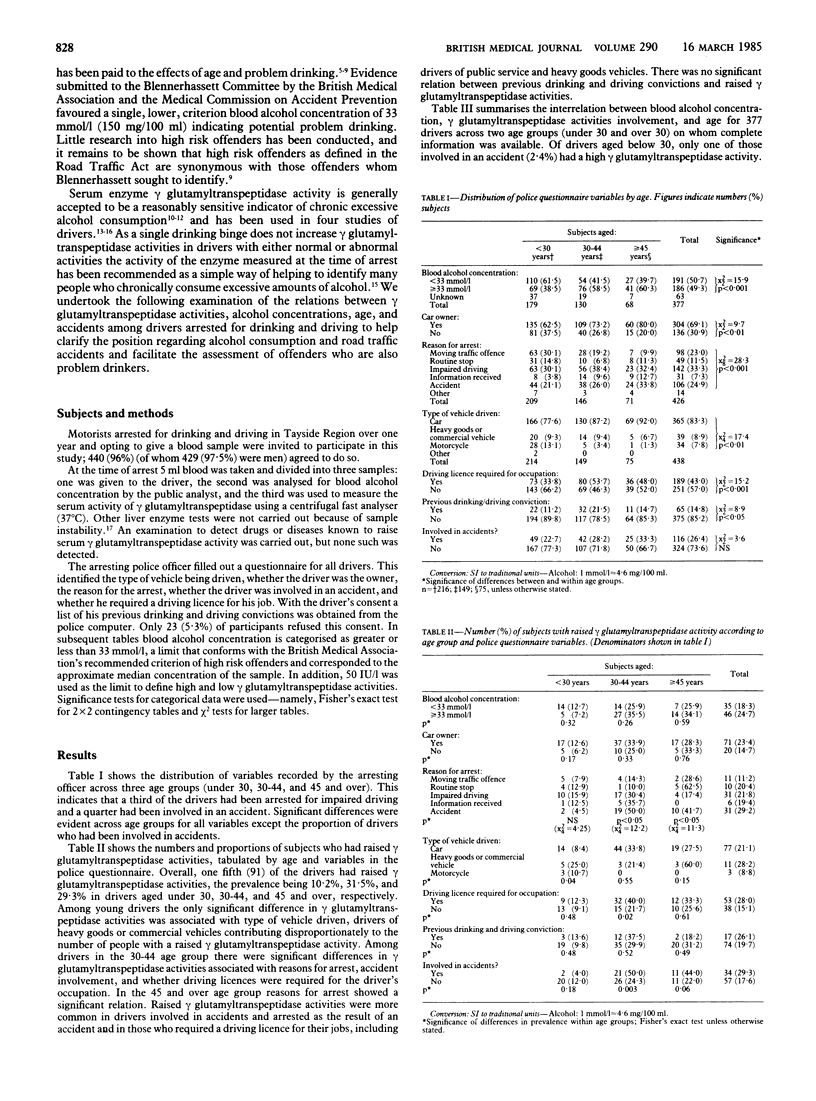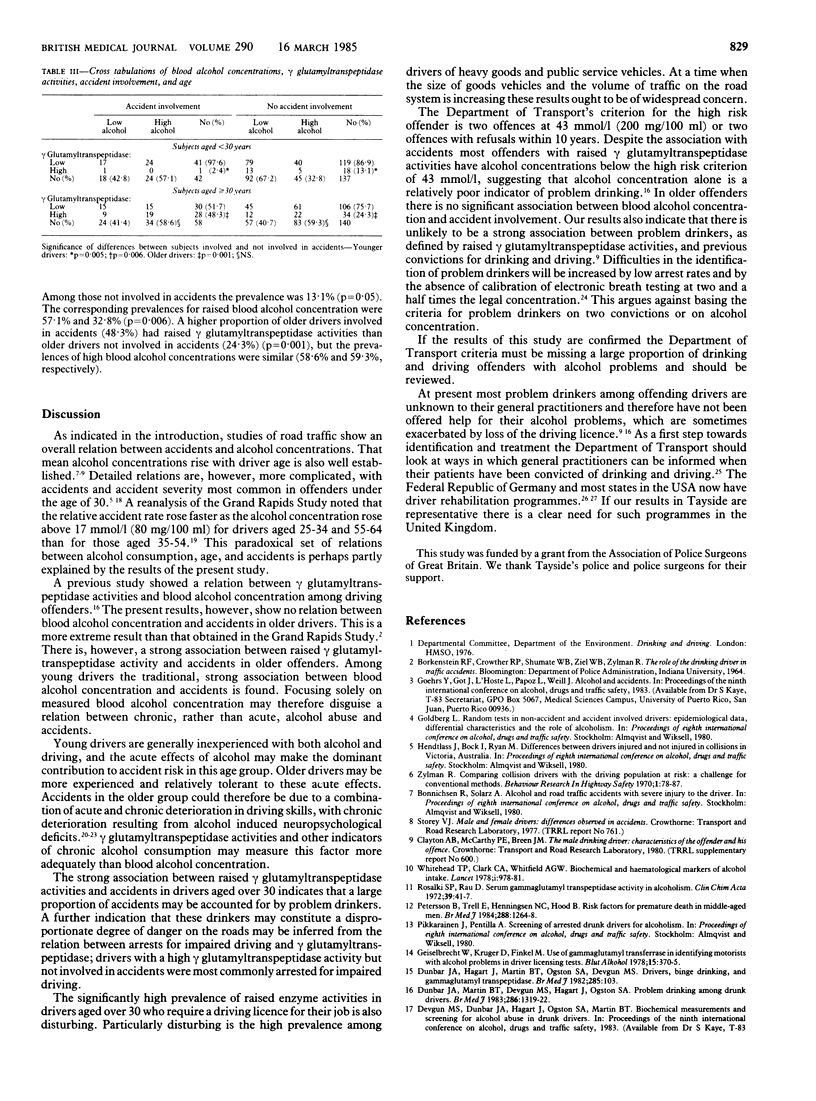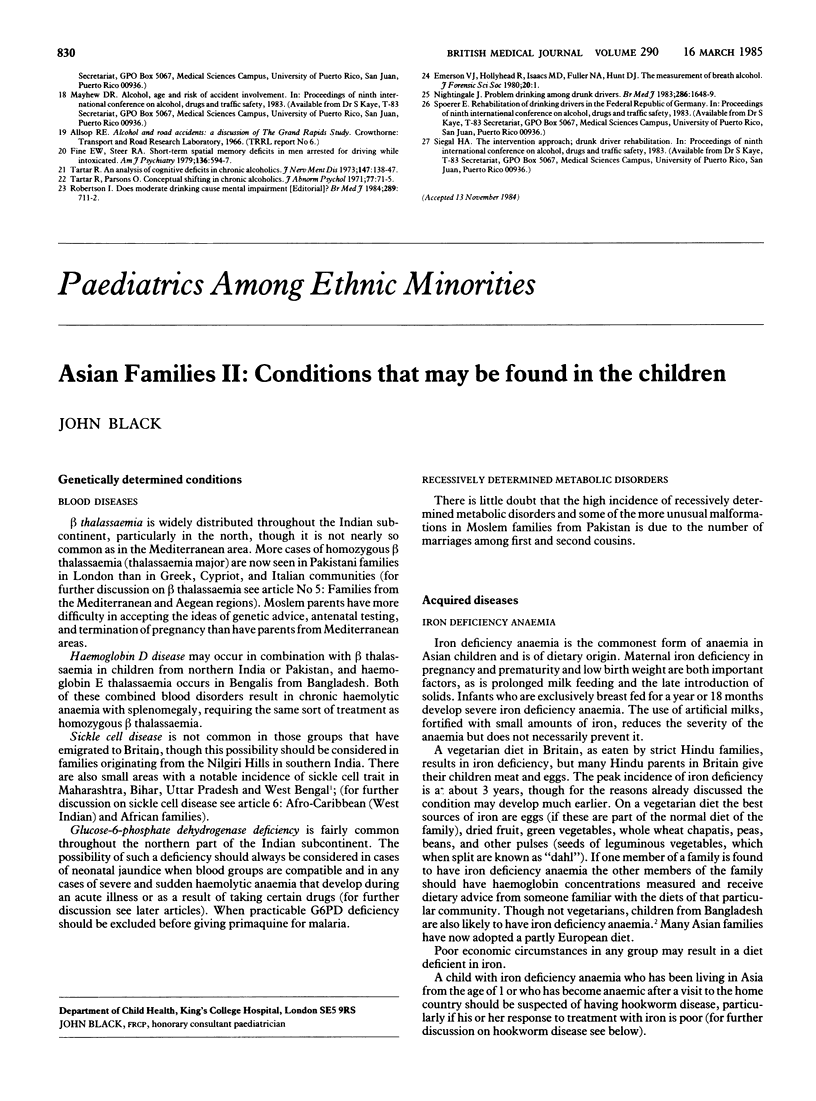Abstract
Serum gamma glutamyltranspeptidase activity was measured in 440 drivers at the time of arrest for driving under the influence of alcohol. The results were compared with information gathered by the arresting police officer. One third of drivers over the age of 30 had abnormal gamma glutamyltranspeptidase activities at the time of arrest. Among drivers who required a driving license for their work, and older drivers, a disproportionately high number had raised gamma glutamyltranspeptidase activities indicating problem drinking. In drivers over the age of 30 a strong association was found between gamma glutamyltranspeptidase activities and road traffic accidents but not alcohol concentrations or previous convictions. These findings argue against the Department of Transport's criteria for high risk offenders and indicate a clear need for new measures against problem drinkers among drinking and driving offenders.
Full text
PDF



Selected References
These references are in PubMed. This may not be the complete list of references from this article.
- Fine E. W., Steer R. A. Short-term spatial memory deficits in men arrested for driving while intoxicated. Am J Psychiatry. 1979 Apr;136(4B):594–597. [PubMed] [Google Scholar]
- Petersson B., Trell E., Henningsen N. C., Hood B. Risk factors for premature death in middle aged men. Br Med J (Clin Res Ed) 1984 Apr 28;288(6426):1264–1268. doi: 10.1136/bmj.288.6426.1264. [DOI] [PMC free article] [PubMed] [Google Scholar]
- Problem drinking among drunk drivers. Br Med J (Clin Res Ed) 1983 Apr 23;286(6374):1319–1322. [PMC free article] [PubMed] [Google Scholar]
- Rosalki S. B., Rau D. Serum -glutamyl transpeptidase activity in alcoholism. Clin Chim Acta. 1972 Jun;39(1):41–47. doi: 10.1016/0009-8981(72)90297-5. [DOI] [PubMed] [Google Scholar]
- Tarter R. E., Parsons O. A. Conceptual shifting in chronic alcoholics. J Abnorm Psychol. 1971 Feb;77(1):71–75. doi: 10.1037/h0030491. [DOI] [PubMed] [Google Scholar]
- Tayor G. B. Northumberland Young Practitioner Group. Br Med J (Clin Res Ed) 1982 Jul 10;285(6335):103–104. doi: 10.1136/bmj.285.6335.103. [DOI] [PMC free article] [PubMed] [Google Scholar]
- Whitehead T. P., Clarke C. A., Whitfield A. G. Biochemical and haematological markers of alcohol intake. Lancet. 1978 May 6;1(8071):978–981. doi: 10.1016/s0140-6736(78)90261-1. [DOI] [PubMed] [Google Scholar]


